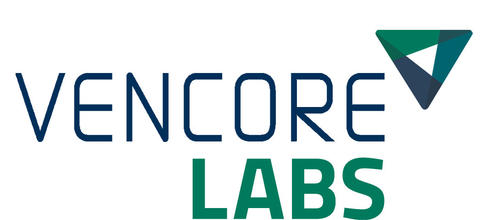Device-to-Device System for Public Safety
Vencore Labs
In disaster situations, centralized cellular infrastructure can fail, crippling emergency communications. Long-Term Evolution (LTE) Direct mode communications provide a way for first responders to communicate without a network infrastructure. However, key technical challenges, such as discovery, synchronization, resource management, and interference mitigation for the User Equipment (UE) must be addressed. Perspecta Labs, in collaboration with EURECOM, a founding member of OpenAirInterfaceTM (OAI), develop a Device-to-Device system for Public Safety (DDPS), demonstrates 3GPP Proximity Service (ProSe) for public safety (PS) applications and aims to solve the aforementioned challenges. DDPS will deliver core technologies essential for transitioning into a full-fledged PS network. - July 2019
Quick Resources
Meet the Team
Co-Principle Investigator: Richard Lau
Bill Johnson
Stephanie Demers
Prof. Raymond Knopp
EURECOM
Co-Principle Investigator: Tony Triolo
Heechang Kim
Joe Liberti

Project Overview
Despite standardization efforts in the last five years, there are no mature peer-to-peer cellular communications solutions that meet the needs of PS networks. Cellulararchitecture is fundamentally centralized where the base station and the Evolved Packet Core (EPC) act as the centralized coordination and management point. In disaster situations, centralized infrastructure can fail, crippling emergency communications. Direct mode communications provide a way for first responders to communicate without a network infrastructure. However, key technical challenges, such as discovery, synchronization, resource management, and interference mitigation for the UE must be addressed.
Vencore Labs, in collaboration with EURECOM, a founding member of OAI, will develop a DDPS, which is a framework for prototyping and demonstration of the 3GPP ProSe for PS applications and aims to solve the aforementioned challenges. DDPS will deliver core technologies essential for transitioning into a full-fledged PS network in two phases In Phase 1 (Year 1), the core DDPS components will be designed, built, and tested through modeling and simulation, emulation, and prototyping using the OAI platform. In Phase 2 (Year 2), DDPS ProSe software will adopt and enhance OAI’s standards-compliant implementation on Ettus Universal Software Radio Peripheral (USRP) Software Defined Radio (SDR)-based platforms and conclude with a feasibility demonstration. The key DDPS technologies include building a complete ProSe stack for Mission Critical Voice, by extending the current OAI implementation to include the access-stratum ProSe services, namely the LTE Sidelink (PC5) interface based on the Rel-14 3GPP specifications. The D2D stack will help create an ecosystem and will be provided to interested vendors for commercialization on a system-on-a-chip platform. Vencore Labs also plans to release the developed stack back into the open source OAI community.
In the research aspects of DDPS, we will design and implement new scheduling algorithms for autonomous resource allocation, which improve on the current baseline ProSe specification to minimize collision probability. The proposed scheme uses additional UE sensing information to optimally allocate ProSe resources and reduce collision. DDPS also addresses the design and implementation of a novel multi-antenna-based synchronization technique to achieve significant improvement in UE autonomous synchronization, for meeting the stringent frequency offset requirements of 3GPP.
With the ProSe OAI stack, the new elements of resource allocation, and a novel synchronization mechanism, DDPS aims to develop and integrate all the new capabilities in a field LTE testbed and demonstrate service continuity with respect to various interworking scenarios for first responder applications. Service continuity is a key component of any future LTE D2D first responder system because the service will coexist with and overlay on top of the regular LTE cellular network. Therefore, ProSe UEs will need to operate in environments where switching among different network modes should be supported. Service continuity design is complex as there are many different parameters including cell size, network layout, UE density, mobility model and RF parameters to be considered. The key challenge in ensuring service continuity and interworking involve the design of a robust distributed mode-switching algorithm, which will be demonstrated in the Phase 2 of DDPS. The final demonstrations will be conducted using a USRP platform and will support various modes of operations including 1) on-network, 2) off-network, and 3) partial-on-network.
The DDPS project, when completed, aims to provide reliable communication capability within a special group of first responders through the use of ProSe-based devices. Vencore Labs plans to engage the FirstNet community to transition the DDPS technology to the Public Safety Broadband Program and will work with NIST to transition the DDPS technology and integrate into emerging Public Safety networks, through common design based on evolving 3GPP standards and open source implementations.

